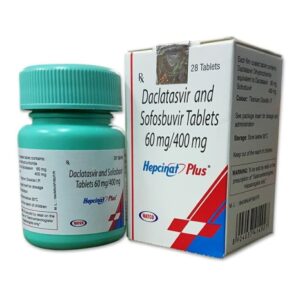
Overview of NAFLD Activity Score
The NAFLD Activity Score is a quantifiable histological tool designed to accurately diagnose steatohepatitis within the broader spectrum of non-alcoholic fatty liver disease. It plays a vital role in assessing the severity of liver damage, thereby facilitating targeted therapeutic interventions.
Implementation Guidelines
This scoring mechanism is intended for use in patients post-liver biopsy for NAFLD evaluation. It’s crucial to acknowledge that the score complements, rather than replaces, comprehensive diagnostic processes, including NASH identification as per guidelines outlined by Brunt and Kleiner (2011).
Detailed Scoring Parameters
Steatosis Grade Evaluation
Scores range from 0 to 3, based on the extent of fat deposition within liver cells, determined through low- to medium-power microscopic examination.
Assessment of Lobular Inflammation
Scores are allocated for the presence and number of inflammatory foci within the liver lobules, observed per 200× magnification field.
Examination of Hepatocyte Injury
The score reflects the degree of liver cell ballooning, from absent to prominent, indicating the level of hepatocyte damage.
Pediatric NAFLD: A Special Focus
Pediatric Non-Alcoholic Fatty Liver Disease (NAFLD) has emerged as the leading cause of liver disease among children, mirroring the global rise in childhood obesity. This condition can manifest in two distinct histological patterns: Type 1, similar to adults, characterized by steatosis, lobular inflammation, and hepatocyte ballooning; and Type 2, unique to children, marked by steatosis primarily in zone 1, along with portal inflammation and scarring.
The presence of these patterns, especially when combined, signals a higher risk of disease progression. Identifying children at the greatest risk remains challenging, with some pathologists using terms like “borderline” or “zone 1 steatohepatitis” to denote potentially progressive disease. The nuanced approach to pediatric NAFLD underscores the importance of early detection and intervention to prevent long-term liver damage.
NAFLD Pathological Insights
Non-Alcoholic Fatty Liver Disease presents a spectrum of liver abnormalities, from simple steatosis to Non-Alcoholic Steatohepatitis (NASH), leading to fibrosis and potentially cirrhosis. Pathologically, NAFLD is characterized by:
- Steatosis: Excessive fat accumulation, predominantly macrovesicular, within liver cells;
- Ballooning Degeneration: Swollen hepatocytes with damaged cell structure, indicative of severe liver injury;
- Lobular Inflammation: Presence of inflammatory cells within the liver lobules;
- Fibrosis: Early stages manifest as pericellular fibrosis around central veins, advancing to bridging fibrosis and cirrhosis;
- Understanding these features is crucial for diagnosing the severity of NAFLD and guiding treatment decisions.
Differential Diagnosis Analysis
Distinguishing NAFLD from other liver diseases is essential for accurate diagnosis and treatment. Key conditions for differential diagnosis include:
- Alcoholic Liver Disease (ALD): ALD shares histological features with NAFLD but is differentiated by a history of significant alcohol consumption;
- Drug-Induced Liver Injury (DILI): Certain medications can mimic NAFLD histology; thus, medication history is vital;
- Hepatitis C: Chronic Hepatitis C, especially genotype 3, can present with steatosis, necessitating viral testing;
- Metabolic Disorders: Conditions like Wilson’s disease may present with liver fat accumulation, requiring specific metabolic and genetic tests;
- Accurate diagnosis involves a comprehensive evaluation of clinical history, imaging, laboratory tests, and liver biopsy findings.
The Impact of Silymarin Treatment
Silymarin, extracted from milk thistle, has been studied for its potential benefits in treating NAFLD and NASH. It exhibits antioxidant, anti-inflammatory, and antifibrotic properties, potentially protecting liver cells from damage. Clinical trials, including randomized, double-blind, placebo-controlled studies, have evaluated silymarin’s efficacy in improving liver function tests, reducing liver fibrosis on biopsy, and improving NAFLD Activity Scores. While not all studies show a significant impact on NAS reduction, evidence suggests silymarin may offer histological improvements in fibrosis, making it a promising adjunct therapy in NAFLD management.
Liver Biopsy: Its Indispensable Role
Liver biopsy remains the gold standard for diagnosing NAFLD, offering unmatched accuracy in assessing disease severity and staging fibrosis. Despite advancements in non-invasive diagnostic techniques, liver biopsy provides critical information unattainable by other means, including:
- Definitive Diagnosis: Distinguishing NAFLD from other liver diseases;
- Disease Staging: Accurately assessing the extent of fibrosis and steatosis;
- Treatment Guidance: Informing treatment decisions based on histological findings;
- In clinical trials and challenging diagnostic scenarios, liver biopsy’s role is indispensable, guiding the nuanced management of NAFLD and advancing our understanding of the disease.
Comparative Table: NAFLD vs. Other Liver Diseases
| Feature | NAFLD/NASH | Alcoholic Liver Disease | Hepatitis C | Wilson’s Disease |
|---|---|---|---|---|
| Primary Cause | Metabolic (obesity, insulin resistance) | Alcohol consumption | Viral infection | Genetic disorder |
| Key Histological Signs | Steatosis, lobular inflammation, hepatocyte ballooning | Steatosis, neutrophilic infiltration, Mallory bodies | Lymphoid aggregates, steatosis | Hepatic copper accumulation, steatosis |
| Treatment Focus | Lifestyle modification, potential pharmacotherapy | Abstinence from alcohol, nutritional support | Antiviral therapy | Copper chelation therapy |
| Risk of Fibrosis/Cirrhosis | Yes, with progression | Yes, with heavy/chronic use | Yes, especially chronic infection | Yes, if untreated |
Conclusion
The NAFLD Activity Score is an indispensable component of the diagnostic toolkit for evaluating steatohepatitis within NAFLD. Detailed histological analysis guides clinical decisions, enhancing patient care and research into therapeutic interventions. Including a unique section and comparative table further enriches the understanding of NAFLD and other liver diseases, emphasizing the necessity of precise diagnosis and tailored treatment strategies.

